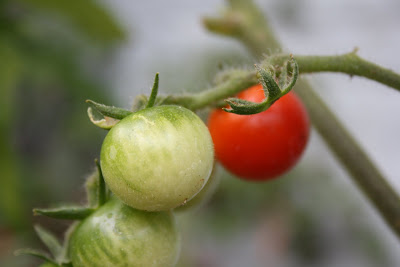It's another big flower show week for London, with
Hampton Court bringing together lots of out of town nurseries, designers and plenty of other gardening treats. Hampton has been suffering in recent years from the poor relation syndrome. Inevitably compared to Chelsea - and never in the same league - it has been struggling to find its own identity. Once known for its water gardens and the big Daily Mail film set of a pavilion, after these had gone, the show flirted with the family tag, food growing, brought in conceptual gardens and floating Thai markets and really seemed to have lost its way. Even the weather has been more than a little unkind: torrential rain, extreme mud and high winds have been typical of Hampton week the last few years.
But today, as the show celebrates its 21st year, it feels like it really has come of age and this show lives up to the spectacular backdrop of Henry VIII's palace. It was gloriously sunny too and soon made me forget that it had taken me the best part of 2 hours to travel around 10 miles (getting there on public transport is challenging).
The conceptual gardens are still very much part of the show, as is the food growing and family stuff, but it seems to have found the right level. Food is at the heart of the show - literally, with the
Home Grown exhibit of lots of conventional and exotic veg and some rather gorgeous chickens; and it leads you neatly into the Growing tastes marquee (love those elephant garlic heads).
And vegetables are liberally sprinkled through many of the small and full-size gardens. For families, there's the scarecrow comeptition and lots of involvement with brownies and girl guides planting up strange objects including filing cabinets and cookers and even a Lego garden (the plants are real...).
The conceptual gardens are bigger and stronger than before and in a more high profile location where you can see them in the context of the main show gardens. There's even a bit of conceptual thinking creeping into other exhibits: check out the giant, hovering pink tap - entitled A Matter of Urgency, it represents bladder control issues on behalf of one of the main show garden sponsors Astellas Pharma.
Meanwhile there is poetry about oak trees and visual statements about disappearing hedgerows in the sustainable area.
I chatted to the artist behind conceptual garden
The Pansy Project. Paul Harfleet simply plants pansies at the nearest available spot wherever homophobic abuse has taken place. I'm sure Hampton Court has been the site of its fair share of abuse over the centuries, so its quite fitting that his cracked slabs provide a darker context for the humble pansy that you are used to seeing in window boxes and hanging baskets.

The new floral marquee is fantastically huge, and thankfully for the growers, even if it does pour with rain this week, a little sturdier than the old tents that used to leak. And you can shop to your heart's content (always the big bonus for Hampton vs Chelsea, where you can't buy plants). I came away with a white gaura and a ruby red achillea. Plus the new Gardens Illustrated pavilion will be
the place to find a tasteful, zen-like spot out of the heat, to see some tantalisingly beautiful (but expensive) pots and country bouquets from
Charlie Ryrie's Real Cut Flower Garden among other gorgeous things.























































